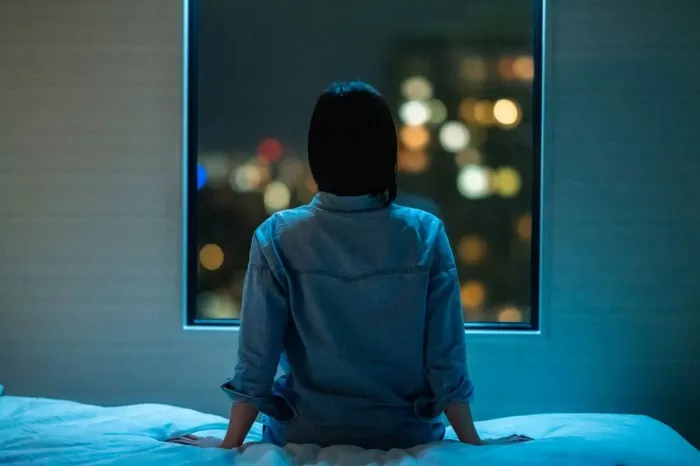Anxiety and insomnia frequently occur together in a challenging cycle. When anxiety levels rise, the mind becomes flooded with persistent worries that make relaxation difficult. This mental hyperactivity directly interferes with the ability to fall asleep and stay asleep. Conversely, when sleep deprivation occurs, the brain’s emotional regulation systems become impaired, often worsening existing anxiety symptoms. This bidirectional relationship creates a self-perpetuating pattern that requires targeted intervention.
The physiological mechanisms behind this connection involve the body’s stress response system. During periods of anxiety, the hypothalamic-pituitary-adrenal (HPA) axis becomes overactive, releasing excessive cortisol and other stress hormones. These biochemical changes prepare the body for perceived threats but simultaneously make sleep initiation nearly impossible. Understanding these underlying processes helps explain why standard sleep advice often fails for those with anxiety-related insomnia.
How Anxiety Disrupts Normal Sleep Patterns
Anxiety affects sleep architecture in multiple measurable ways. Polysomnography studies reveal that anxious individuals experience:
Reduced slow-wave sleep: The deepest, most restorative sleep stages become fragmented
Increased sleep latency: The time needed to fall asleep extends significantly
More frequent awakenings: Sleep continuity suffers with multiple nighttime arousals
Earlier morning awakening: Total sleep time decreases due to premature waking
Common symptoms that patients report include persistent mental chatter at bedtime, physical tension that prevents comfortable positioning, and heightened awareness of environmental stimuli that would normally go unnoticed. Many describe lying awake for hours while simultaneously feeling exhausted, creating significant distress about the sleep process itself.
Evidence-Based Treatment Approaches
Cognitive Behavioral Therapy for Insomnia
Cognitive Behavioral Therapy for Insomnia (CBT-I) stands as the gold standard treatment with the strongest empirical support. This structured program typically spans 6-8 weeks and addresses both the cognitive and behavioral components of sleep disturbance.
The cognitive portion focuses on identifying and modifying maladaptive beliefs about sleep. Many anxiety sufferers develop catastrophic thinking patterns regarding the consequences of poor sleep, which ironically perpetuates the problem. Therapists help patients examine evidence for these beliefs and develop more balanced perspectives.
Behavioral components include:
Stimulus control instructions: Reestablishing the bed as a cue for sleep by eliminating nonsleep activities
Sleep restriction protocol: Temporarily limiting time in bed to increase sleep efficiency
Paradoxical intention techniques: Reducing performance anxiety about falling asleep
Multiple meta-analyses confirm CBT-I produces durable improvements, with approximately 70-80% of patients experiencing significant relief. The treatment effect sizes compare favorably to pharmacotherapy while avoiding medication side effects.
Mindfulness-Based Stress Reduction
Mindfulness-Based Stress Reduction (MBSR) programs have demonstrated particular efficacy for anxiety-related sleep problems. These 8-week interventions teach participants to cultivate present-moment awareness through formal meditation practices and informal daily exercises.
Key mechanisms through which mindfulness improves sleep include:
Decreased cognitive hyperarousal: Learning to observe thoughts without becoming entangled
Enhanced emotion regulation: Developing tolerance for uncomfortable sensations
Reduced sleep effort: Replacing active trying with allowing sleep to occur naturally
Neuroimaging research shows mindfulness practitioners develop increased prefrontal cortex activation and decreased amygdala reactivity, reflecting improved top-down control of anxiety responses. These neural changes correlate with both subjective and objective sleep improvements.
Pharmacological Considerations
While medications should not constitute first-line treatment, they may serve as useful adjuncts in certain cases. Clinicians should consider these options carefully:
Sedating antidepressants: Trazodone and mirtazapine at low doses can improve sleep initiation
Benzodiazepine receptor agonists: Zolpidem and eszopiclone may help short-term but carry dependency risks
Melatonin agonists: Ramelteon targets the circadian system with minimal side effects
Orexin antagonists: Newer medications like suvorexant show promise for sleep maintenance
Important prescribing principles include using the lowest effective dose for the shortest necessary duration and regularly reassessing continued need. Medication should ideally combine with behavioral interventions rather than replace them.
Nutritional and Lifestyle Modifications
Several evidence-based lifestyle adjustments can significantly impact sleep quality:
Caffeine management: Complete avoidance after 2 PM helps prevent adenosine receptor interference
Alcohol reduction: Despite initial sedative effects, alcohol fragments sleep architecture
Evening light exposure: Dimming lights 2 hours before bed supports natural melatonin production
Temperature regulation: Maintaining a bedroom temperature around 65°F (18°C) facilitates thermoregulatory drops
Emerging research on dietary patterns suggests Mediterranean-style diets rich in omega-3 fatty acids may confer some protection against anxiety-related sleep disturbances through anti-inflammatory mechanisms.
Advanced Intervention Options
For treatment-resistant cases, these specialized approaches may prove beneficial:
Biofeedback training: Teaches voluntary control of physiological processes like muscle tension
Bright light therapy: Morning exposure helps regulate circadian rhythms
Sleep restriction variants: Titrated approaches for highly sensitive individuals
Comorbid condition treatment: Addressing underlying medical contributors
Conclusion
Effective management of anxiety-induced insomnia requires a comprehensive, multimodal approach that addresses both the psychological and physiological aspects of this condition. The most successful treatment plans typically combine cognitive-behavioral strategies with mindfulness practices, judicious lifestyle modifications, and when appropriate, carefully monitored pharmacotherapy.
Patients should understand that improvement often follows a nonlinear trajectory, with gradual progress occurring over weeks to months. Consistent implementation of evidence-based techniques yields the greatest likelihood of achieving sustainable sleep restoration and anxiety reduction. Healthcare providers play a crucial role in educating patients about realistic expectations while providing ongoing support throughout the treatment process.
By addressing the root causes rather than just the symptoms, individuals can break the cycle of anxiety and insomnia, ultimately restoring both nighttime rest and daytime functioning. The strategies outlined here offer a scientifically validated pathway to achieving this goal, with customization based on individual needs and preferences. Continued research promises to further refine these interventions, offering hope for even more effective solutions in the future.
Related topics:
- Low Serotonin: Symptoms, Causes & Treatment
- Can Wellbutrin Treat Anxiety?
- Is Trazodone Good For Anxiety? Work & Side Effects


